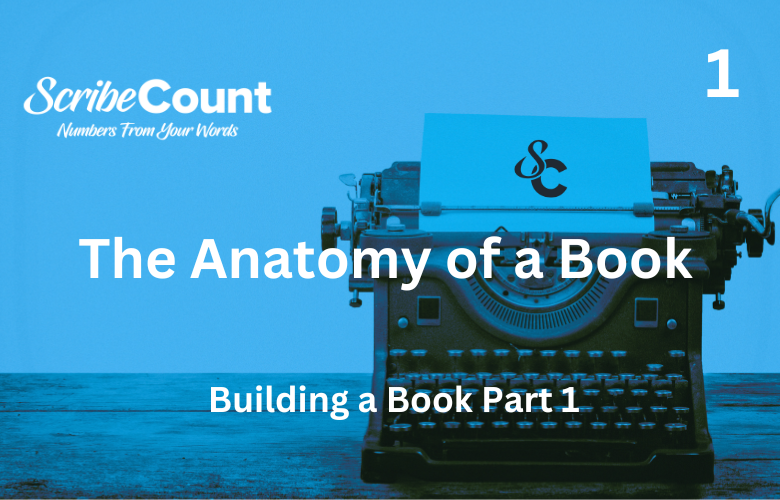Building a Book
I thought I knew all the parts that went into a book simply because I had read a jillion of them in my lifetime.
I was wrong.
Turning that ream of paper into an actual book requires a bit of know-how and some technical skills. There’s a learning curve, but it’s not too steep. Most indies who are starting out will assemble the parts and then hand them over to a good formatter who will assemble their book for them. You may wish to learn that skill yourself, or, if you are like me, utilize a pro who has more talent and patience than I do. Whatever path you choose should result in a book that meets industry requirements and standards, while also being indistinguishable from a professionally trade published book.
Don’t skip anything without some careful consideration first. Publishing a book as an indie author requires assembling numerous components that transform a manuscript into a polished and professional product. Each part serves a distinct function, guiding the reader, establishing credibility, and enhancing the reading experience. From the preliminary pages to the final acknowledgments, every element must be carefully considered to ensure the book meets industry standards. Understanding these components helps indie authors publish their work effectively, whether in print or digital form.
We’ll outline and briefly explain each part here with more detailed descriptions in other articles.
The Various Parts (In order)
COVER ART (FRONT, BACK, AND SPINE)
A book’s cover is one of its most critical marketing tools. The front cover should feature an eye-catching design that reflects the book’s genre and tone, along with the title and author name. The spine, visible on shelves, must be clear and legible, especially for print editions. The back cover typically includes a book description, author bio, and sometimes reviews or endorsements. A professionally designed cover significantly impacts a book’s appeal and sales potential.
HALF-TITLE PAGE
The half-title page, sometimes called the bastard title, is the first printed page of a book. It typically features only the book’s title, often in a smaller font or simpler layout than the full title page. This page serves as a visual buffer, providing a subtle introduction before the main title page appears. While not always included, it adds a professional touch to traditionally formatted books and aligns with industry expectations. It also provides the author a place to sign the book, so leave enough space for that!
TITLE PAGE
The title page is a crucial element, presenting the book’s full title, subtitle (if applicable), and the author’s name. In traditionally published books, the publisher’s imprint also appears, but for indie authors, this might be replaced with their publishing brand or imprint. The title page establishes the book’s identity and serves as an official reference for cataloging and copyright purposes.
COPYRIGHT PAGE
The copyright page contains legal and bibliographic information, typically found on the verso (back) of the title page. It includes the copyright notice, year of publication, author rights statement, ISBN, publisher details, edition information, and disclaimers about reprint permissions and intellectual property protection. This page is essential for legal protection and ensures the book adheres to publishing standards.
DEDICATION PAGE
The dedication page provides a space for the author to honor individuals who played a significant role in their writing journey. Whether dedicating the book to family, mentors, or an inspiring figure, this page adds a personal touch that connects the author to their audience. Though entirely optional, it offers a heartfelt element to the book’s front matter.
TABLE OF CONTENTS
A table of contents (TOC) is primarily necessary for nonfiction and structured fiction books. It lists chapter titles and their corresponding page numbers, providing readers with an easy way to navigate the book. In digital formats, a clickable TOC enhances accessibility, allowing seamless navigation in eBooks. Fiction books often omit this feature unless they contain multiple sections or viewpoints.
FOREWORD/INTRODUCTION
A foreword, written by someone other than the author, typically provides context, credibility, or a testimonial for the book. It’s common in nonfiction and memoirs, where an influential figure may endorse the content. An introduction, by contrast, is written by the author and sets the stage for the book’s purpose, themes, or background information. It gives readers insight into what to expect without revealing too much of the content.
PROLOGUE
A prologue serves as an introductory section to the main story, often providing background details, setting up a mystery, or offering a glimpse into events that precede the main narrative. It is a useful tool in fiction, particularly in genres like fantasy, thriller, and historical fiction, where world-building or foreshadowing enhances reader engagement. However, it should be compelling and essential to the story rather than an unnecessary exposition.
STORY CONTENT
The core of any book is its main content—whether it’s a novel, memoir, or nonfiction work. This section holds the author’s primary message or story, broken into chapters or sections as needed. The pacing, structure, and flow of the content determine how effectively the author communicates their vision. Formatting should be clean and consistent, ensuring readability and professional presentation.
EPILOGUE
An epilogue serves as a closing section that provides additional information after the main story concludes. It may offer insight into the characters' future, resolve lingering questions, or set up a sequel. In nonfiction, it can function as a reflective conclusion or a call to action. While not always necessary, a well-crafted epilogue adds a sense of closure to the book.
ACKNOWLEDGEMENTS
The acknowledgments section allows authors to express gratitude to those who contributed to the book’s creation. This might include editors, cover designers, beta readers, family members, and mentors. While some authors place acknowledgments at the beginning, they are traditionally positioned at the end to avoid interrupting the reading experience.
Other Interior Pieces
EPIGRAPHS
An epigraph is a short quotation or excerpt placed at the beginning of a book or a chapter. It provides thematic context, setting the tone for the content that follows. Epigraphs are often drawn from literature, philosophy, or historical texts, offering readers a deeper connection to the themes explored in the book.
ILLUSTRATIONS
Illustrations, maps, or diagrams enhance a book’s visual appeal and comprehension. Nonfiction books may use them to clarify concepts, while children’s books, graphic novels, and fantasy works often rely on illustrations to tell the story. Proper formatting ensures that illustrations are high-quality and print correctly across different publishing platforms.
INDEXES FOR NON-FICTION
An index is a detailed alphabetical listing of topics covered in a nonfiction book, guiding readers to relevant sections. While optional, indexes are invaluable in reference books, academic works, and comprehensive nonfiction guides. They add credibility and usability, making it easier for readers to locate specific information quickly.
AUTHOR BIO AND PICTURE
The author bio provides background information about the writer, often including previous works, expertise, or personal details that relate to the book’s content. A professional author photo adds authenticity and helps readers connect with the writer. This section is typically placed on the back cover, inside flap, or in the backmatter.
ISBNs
The International Standard Book Number (ISBN) is a unique identifier required for distributing books through major retailers and libraries. It distinguishes editions and formats, such as hardcover, paperback, and eBook versions. Indie authors can purchase ISBNs through official agencies like Bowker in the U.S. or obtain free ISBNs from platforms like Amazon KDP, though these may come with restrictions on distribution.
BACKMATTER
Backmatter consists of supplementary content that follows the main text. This can include appendixes with additional material, a postscript with final thoughts, a bibliography citing sources, and previews of upcoming books. Many indie authors use backmatter to promote their work by listing other books they’ve written, linking to their website, and encouraging readers to join their newsletter. This section is a strategic tool for audience engagement and book promotion.
QR CODES
The "QR" in "QR code" stands for "Quick Response". It's a type of two-dimensional barcode that allows for quick and easy scanning and decoding of information. It provides an easy and fast way to let the reader transition form a physical page or cover to an online page. Many indie authors are utilizing QR codes to pull readers into their websites and newsletters.
CONCLUSION
Understanding and assembling each part of a book is essential for indie authors striving for a professional publication. From legal necessities like the copyright page to marketing elements like the back cover and ISBN, every component contributes to the book’s overall success. By carefully crafting these sections, indie authors can produce high-quality books that stand out in a competitive marketplace.

